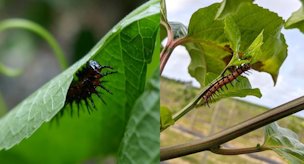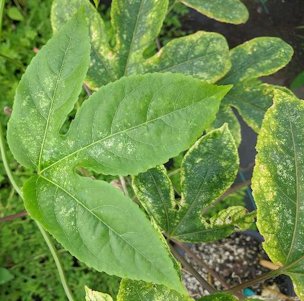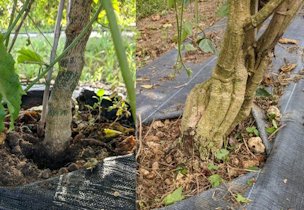From the Horticultural Sciences Department, Florida Cooperative Extension Service Institute of Food and Agricultural Sciences, University of Florida |
|
| Bibliography Bailey, Mark, et al. "The Passion Fruit in Florida." Horticultural Sciences Dept., UF/IFAS Extension, Original pub. Jan. 2021, EDIS, edis.ifas.ufl.edu/hs1406. Accessed 11 Feb. 2021. Photographs Fig. 1 Bailey, Mark, and Joshua Anderson. "Gulf fritillary caterpillar feeding on leaf." Horticultural Sciences Dept., University of Florida, EDIS, edis.ifas.ufl.edu/hs1406. Accessed 19 Feb. 2021. Fig. 2 Anderson, Joshua. "Spider mite damage. Notice the recent damage on younger leaf compared to older damage." Horticultural Sciences Dept., University of Florida, EDIS, edis.ifas.ufl.edu/hs365. Accessed 19 Feb. 2021. Fig. 3 Anderson, Joshua. "Comparing a healthy stem of a yellow passion fruit rootstock left, to a yellow seedling with canker, right, where there is swelling and outside bark dying." Horticultural Sciences Dept., University of Florida, EDIS, edis.ifas.ufl.edu/hs365. Accessed 19 Feb. 2021. Published 19 Feb. 2021 LR |
|



